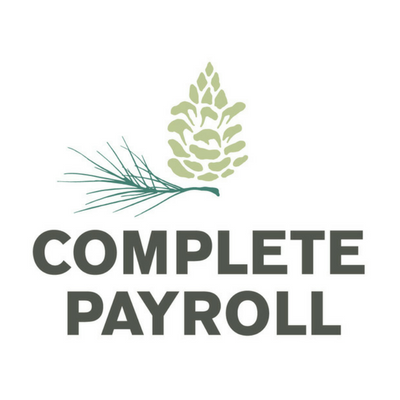It’s easy to become overwhelmed when tackling difficult conversations, and terminations are no exception. Who hasn’t experienced a conversation, either in their professional or personal life, that derailed once heightened emotions came into play? When you anticipate challenging conversations like this, one of the best ways to prepare is to have a script.
While you don’t necessarily want to read directly from an employee termination script like you did when presenting book reports in fourth grade, a good script gives you language to fall back on even when the circumstances are upsetting. It can also help ensure that you don’t say something you might later regret.
Beginning the conversation about termination.
Be upfront about what’s happening, and don’t leave your employee hanging on with hope. While you might feel tempted to couch the termination in comforting terms, don’t obfuscate. Clarity is kindness when the news is hard.
Example scripts for opening the conversation about termination:
“Conrad, we talked multiple times about the need to improve the quality of your work. Unfortunately, while your performance has improved somewhat over the last month, you’re still not where we need the person in your position to be. As a result, we’ve made the decision to end your employment here. Today is your last day.”
“Sonia, you’ve been a valuable employee, but our current situation means that we can’t responsibly maintain the same number of people that we’ve employed in the past. I’m very sorry, but your position is being eliminated and we are letting you go.”
“Renee, your behavior yesterday was completely inappropriate and violated both the rules and the values of this organization. You are being terminated, and your position here ends now.”

Notes on these scripts for introducing the termination:
- They are short and straightforward and do not hide the fact that the termination is occurring.
- The tone varies depending on the circumstances. An unapologetic but compassionate tone is best when terminating a well-meaning employee for poor performance. Expressing regret is appropriate during a layoff. A stern tone is best when dealing with behavior resulting in an immediate termination.
- They express ownership of the decision. “We need to …” or “We have to …” opens the door to debate. “We have decided to …” is firmer. If you’re the sole owner/manager of a small business, you can change “we” to “I” as appropriate.
Continuing the conversation with logistical concerns
At this point, it’s best to continue directly with the logistics of the termination. This serves two purposes. Firstly, most of the questions that the employee has about their termination will probably be answered during this part of the conversation anyway. Secondly, this gives the employee a moment to gather their thoughts and sort through their emotions before being expected to respond.
Example scripts for addressing the logistics of the termination:
- Pay: “Today will be your last day. You will receive your final paycheck by [date] in the mail. This includes [unused vacation time, today’s pay, anything else included].” Or, if handing it over in person, “This is your final paycheck.”
- Company property: “I’ll need you to return your [laptop, ID, keys, data storage devices, etc.] before you leave today.”
- Employee property: “You can collect your belongings today. Or, if you’d prefer, you can come back at [time] tomorrow, and I can help you gather your things.”
- Severance, benefits, etc.
- “We appreciate the good work you’ve done and would like to offer you a severance package of [X weeks of salary, other benefits] should you agree to the terms of the separation agreement.”
- “Your medical insurance coverage will end on [date]. You should make plans to apply for COBRA or a marketplace plan by then.”
- “We have a separation agreement available for you to sign. If you choose to do so, you will be compensated with [small but reasonable amount of money].”
Notes on these scripts for termination logistics:
- They’re simple. It’s extremely challenging to retain details when you’re upset. Complexity is likely to get lost in this conversation, so keep things clear and organized.
- They might not all be necessary. Severance, for example, is usually only offered in the case of a layoff, not during a firing. Part-time employees without medical coverage don’t need information about benefits.
Managing questions and emotions
It’s entirely likely that your employee will have something to say about the termination. These are some scripts to help you handle those instances with grace.
Example scripts for responding to a terminated employee.
- “You’re letting me go? What about Heidi?”
- “We’re not talking about Heidi’s performance right now, just yours.”
- “But you said I was doing better!”
- “You did show improvement, but in our earlier conversations, we made it clear that your work needed to meet certain standards in order for you to retain your position. [Give details, reading from documentation as necessary.] You didn’t accomplish that, and so we are letting you go.”
- “This is just because I’m [a member of a protected class]!”
- “You are being terminated as a result of well-documented performance issues.”
- Crying
- Provide tissues and offer a drink of water. “Take all the time you need to collect yourself. I understand this is difficult.”
- Shouting
- “I would like for us to part on good terms, but I need you to stop shouting if this is to happen.”
- Violent behavior
- “This is unacceptable behavior, and you need to get in control of yourself immediately.” Position yourself so that the employee is not between you and the exit. Call in a colleague, security personnel, or even the police as necessary. Keep yourself and your employees safe.
- Detailed questions about unemployment or any other topic you’re not 100% sure about.
- “I’m sorry, I don’t know the answer. You’ll need to ask an expert about that.”
Notes on these scripts for responding to a terminated employee:
- They leave no room for debate. Reiterate your decision as many times as necessary, but don’t defend yourself beyond repeating what you have documented.
- They don’t discuss other employees. You might very well have other problematic employees, but this is not the setting to discuss them.
- They stick to the facts. Emotional outbursts can be a way to derail a conversation and can tempt you into saying something you will regret. Keep your own side of things as neutral as you can.
Need assistance with hiring and firing?
Complete Payroll has you covered. Contact us for more information about how we can help. And your copy of our New York State Employee Termination Kit is just a click away.

For more information and insights into the laws, best practices, and complexities around terminating employees, check out our resource page, A Complete Guide to Employee Terminations. It's an all-in-one page that includes thorough insights, instructions, and plenty of links to other helpful resources.
Additionally, here are some other articles that focus on the difficult subject of terminating employees:



















 Get Instant Blog Notifications
Get Instant Blog Notifications


